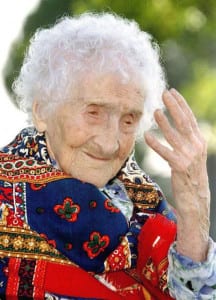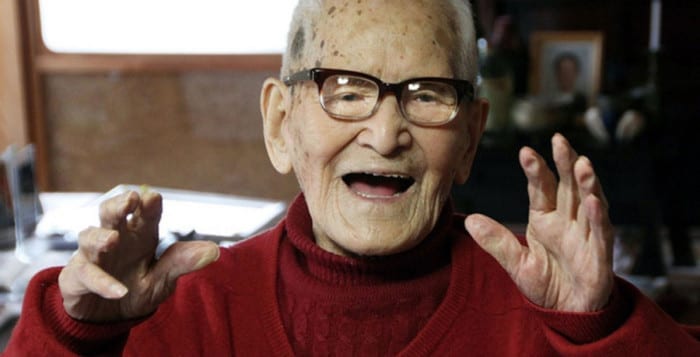How long can we live?
By Elof Carlson
The oldest authenticated woman was Jeanne Calment (1875-1997), which made her 122 years old when she died in Arles, France. The oldest authenticated man was Jiroemon Kimura (1897-2013), who lived 116 years and 54 days and died near Kyoto in Japan. That is in keeping with the finding that in all cultures women live two to five years longer than men.
This might be genetic (males are XY; so any harmful genes on the X are expressed in them) or it might be because males have usually done more dangerous work exposing them to carcinogens and mutagens or they tend to abuse their bodies more than women do with tobacco and alcohol. Both factors may play a role.
Mean life expectancy is a measure used by those who tabulate vital statistics. It is usually done on the day of one’s birth. It includes all deaths at any age. This creates a misleading number. Thus the mean life expectancy in the Stone Age when many of our ancestors lived in caves was about 20. This low number is based on studies of skeletal remains in these caves. In one study of 4000-year-old skeletons in the Orkneys just off northern Scotland, out of 342 skeletons, 63 died as teens, 24 died as toddlers, 70 died as children (2 to 12 years old), and 185 were adults (20 and older). Many of the adults lived to their 50s.

Infant skeletons are underrepresented because they are least likely to be preserved. Infant mortality was common during all civilizations until the germ theory was introduced and the transport of foods in the last half of the nineteenth century reduced both infections (pneumonia and gastritis) and malnutrition, which were the major causes of infant mortality. Half of all children died in their first year for most of the history of humanity.
Today, virtually all of the children born in industrialized countries live to reach reproductive maturity. Even in the 20th century, these reductions in infant mortality are apparent: they were 10 percent of U.S. births in 1907, 2.6 percent in 1957 and 0.68 percent in 2007. The mean life expectancy for U.S. males was 45.6 in 1907, 66.4 for 1957 and 75.5 in 2007. If one excludes infant mortality, there is still a better chance today of a person of 50 living to be 80 than it was in 1907, but the dramatic decline in death has been in childhood infectious diseases.
We owe that triumph to public health — especially the pasteurization of milk for infants and the use of chlorine in reservoirs to kill typhoid and other bacterial agents in drinking water.
Very likely by the end of this century most babies will have a mean life expectancy of about 90 (for females) or 87 (for males). The five-year gap between males and females is also narrowing, but at a slower rate.
While there are many attempts through diet and food supplements to extend life, the more likely outcome has been to have more people who live into their 80s and 90s. Centenarians are still relatively rare in industrialized nations. No one knows what makes a person live to 110 or more years (so rare that they are news stories when they die).
When my wife Nedra’s second cousin Grover Dawald (1884-1990), had his 105th birthday in Rochester, Indiana, he received a card of Congratulations from President George H. W. Bush. He was still living at home and danced on the day of his last birthday.
Elof Axel Carlson is a distinguished teaching professor emeritus in the Department of Biochemistry and Cell Biology at Stony Brook University.







